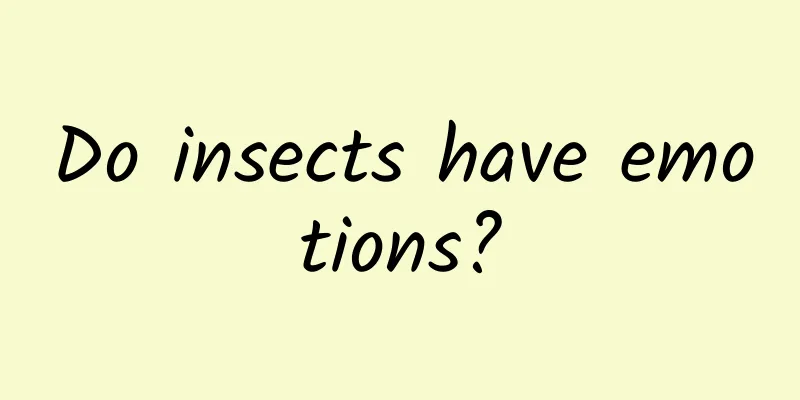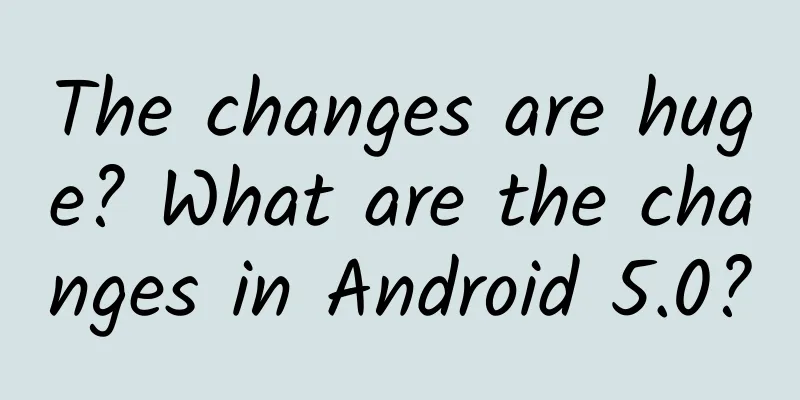Do insects have emotions?

|
© BBC/Alamy Leviathan Press: Personally, the question of whether insects have "emotions" or whether they can "feel hungry/happy/painful" is not just a dispute over the literal meaning of the words. It involves a more important issue: the exploration of subjective consciousness. Scholars who oppose the "anthropomorphism" use another argument to describe the consciousness-like phenomena they observe, which is actually a cautious hint that the experience mechanism of insects is very different from that of us mammals. When we use the word "emotion" to describe the "inner state" of insects, it is equivalent to admitting that they have the same or similar emotional experience as us humans - this is undoubtedly difficult for many people to accept. But then again, whether you support or oppose "anthropomorphism", there is still a highly debatable issue here: it is very problematic to infer whether a species has consciousness based solely on the neural activity of the brain (similar to that of humans). (Insectophobes beware) On a warm fall day in 2014, David Reynolds stood up to speak at a critical meeting at Chicago City Hall — a grand venue with marble staircases, 75-foot-tall classical columns and vaulted ceilings. As the city's pest control chief for public buildings, Reynolds was giving a speech about his annual budget. But soon after he began, an impostor suddenly appeared on the wall - a fat cockroach, its shiny black body contrasting sharply with the white paint. It crawled shamelessly on the wall, as if mocking him. "Secretary, what's your annual budget for cockroach extermination?" one council member interrupted, according to The Chicago Tribune, prompting a raucous laugh from the audience, who scrambled frantically to exterminate the six-legged prankster. No one would deny that the cockroach's timing was impeccable: hilarious, albeit accidental. But the incident is hilarious in part because we think of insects as robotic, with little more emotional depth than a few rocks. The idea that a cockroach could be amused or deliberately amuse others is simply absurd. But is it really like that? In fact, there’s growing evidence that insects can experience a wide range of feelings. They can (literally) buzz with joy at surprise, or get upset when something bad happens that’s beyond their control. They can be optimistic, cynical, or frightened, and respond to pain like any mammal. Although no one has yet to identify a nostalgic mosquito, an embarrassed ant, or a mocking cockroach, our knowledge of their emotional complexity is growing with each passing year. (www.science.org/doi/10.1126/science.aaf4454) (pubmed.ncbi.nlm.nih.gov/23602474/) (www.sciencedirect.com/science/article/pii/S0960982211005446) (authors.library.caltech.edu/57549/) (www.science.org/doi/10.1126/sciadv.aaw4099) When Scott Waddell, a professor of neurobiology at the University of Oxford, first started studying emotions in fruit flies, he had a favorite joke that he tells again and again: “… you know, I had no ambition to study them,” he says. Fast forward to today, and the notion of insect ambition isn’t as far-fetched as it once was. Wardle points to some studies finding that fruit flies do pay attention to what their peers are doing and are able to learn from them. Meanwhile, the UK government recently acknowledged that their closest relatives, crabs and lobsters, are sentient, and proposed legislation to ban people from cooking them alive. (journals.plos.org/plosgenetics/article?id=10.1371/journal.pgen.1007430) So how can one detect insect emotions? How do we know they aren't just responding automatically? And if they are truly sensitive creatures, should we change the way we treat them? As far as insects go, golden tortoise beetles are unusually good at expressing their emotions (Credit: Alamy) The necessity of evolution Insects are a group of six-legged invertebrates with segmented limbs. There are more than a million different species of insects, including dragonflies, moths, weevils, bees, crickets, silverfish, praying mantises, mayflies, butterflies, and even head lice. Insects first appeared at least 400 million years ago, long before the dinosaurs first took their first toddling steps. Our last common ancestor with them is thought to have been a slug-like creature that lived about 600 million years ago, and they have diversified ever since. Initially they dominated the landscape as giants—some dragonflies are the size of sparrowhawks, with a 2.3-foot (70-centimeter) wingspan—before evolving into today’s extraordinary group of arthropods, from flies with pseudo-scorpion tails to furry moths that look like winged poodles. © Emily Willoughby As a result, they are strikingly similar to other animals, yet very different. Insects have many of the same organs as humans—hearts, brains, intestines, and ovaries or testicles—but lack lungs and stomachs. Rather than being connected by a network of blood vessels, their body parts float in a soup that moves food and carries away waste. The whole thing is then encased in a hard shell, an exoskeleton made of chitin, the same material fungi use to build themselves. Their brain structures follow a similar pattern. Insects don't have exactly the same brain regions as vertebrates, but their brain regions do perform similar functions. For example, most of insect learning and memory rely on "mushroom bodies" - domed brain regions that have been likened to the human cerebral cortex, the folded outer region of the brain that is primarily responsible for human intelligence, including thinking and consciousness. (Intriguingly, even insect larvae have mushroom bodies, and some of their neurons remain throughout life — leading some to suggest that adults who pass through this stage might be able to remember certain things that happened before they metamorphosed.) (elifesciences.org/articles/52411) (www.semanticscholar.org/paper/Insects-Provide-Unique-Systems-to-Investigate-How-Westwick-Rittschof/37676219b54f2333827f04db9618fe9713f43429) There is growing evidence that the similarities between our nervous systems and those of insects also give us many of the same cognitive abilities. Bees can count to four. Cockroaches have rich social lives and form tribes that stick together and communicate with each other. Ants are even able to develop new tools—they can select objects from their environment and adapt them to the task they are trying to accomplish, such as using a sponge to carry honey back to the nest. (pubmed.ncbi.nlm.nih.gov/16809544/) (www.smithsonianmag.com/smart-news/if-cockroaches-are-conscious-would-that-stop-you-from-smushing-them-180947876/) (www.sciencedirect.com/science/article/abs/pii/S0003347216302925) Yet, while the evolution of insect brains so far is eerily similar to our own, there is one key difference: While our brains are so large that they consume 20% of our energy and drive women to evolve wider hips, insects have compressed their intelligence into a size millions of times smaller than ours—a fruit fly’s brain is as small as a poppy seed. How they did it remains a scientific mystery to this day. Asian honey bees scream by vibrating their bodies. © Alamy So even at first glance, it seems that insects should have the intelligence to experience emotions. But could they have evolved this ability? Emotions are psychological feelings that are usually associated with situations in animals - they are akin to mental programs that, once activated, can change the way we behave. Different emotions are thought to have emerged at different points in evolutionary history, but in general they emerged to encourage us to take specific actions in order to improve our ability to survive or reproduce and, ultimately, maximize our genetic legacy. Geraldine Wright, professor of entomology at Oxford University, gives the example of hunger, a mental state that helps you change your decisions in appropriate ways, such as prioritizing the act of finding food. Other emotions can also motivate us - a burst of anger can focus our energy on correcting an injustice, while the constant pursuit of happiness and satisfaction pushes us towards achievements that will keep us alive. All this applies to insects, too. When a centipede finds a moist crevice filled with delicious rotting vegetation, it is less likely to starve or dry out, so it gets excited, just as another centipede, when disturbed, may panic and play dead, making it more likely to escape a predator. (academic.oup.com/jinsectscience/article/10/1/184/887519) “Let’s say you’re a bee and you’re caught in a spider’s web, and the spider is scurrying across it towards you,” says Lars Chittka, who leads a group studying bee cognition at Queen Mary, University of London. “It’s not impossible that the flight response could be triggered in the absence of any emotion. But on the other hand, I find it hard to believe that it would happen in the absence of some form of fear.” A heretical idea When Wardle first started his research group in 2001, he had a fairly simple goal. He wanted to know whether fruit flies would be better at remembering where to find food after a while without eating—that is, if they could feel subjective emotions, would they be better at remembering where to find food when they felt “hungry.” (It turns out that they can, and do, remember where to find food when they’re hungry.) (www.jneurosci.org/content/28/12/3103) Studying pain in fruit flies is difficult because they don't respond to morphine. However, they prefer cocaine. © The Siasat Daily First, Wardle was careful to use the word "motivation" rather than "hunger" to describe the flies' mental state. He suggested that if people didn't feed the flies, they would be more motivated to find food. "People thought that was a bit problematic," Wardle said. Other scientists thought the word was too anthropomorphic and preferred the term "internal states." “So I would often get into arguments with people that I thought were essentially meaningless because they were just struggling with the words themselves,” he said. Then, over the next few years, studying insect intelligence became very fashionable—and, according to Wardle, suddenly the word "motivation" was dropped, and researchers began to investigate whether insects had "emotional primitives." In other words, they experienced things that looked a lot like emotions. “I’ve always thought of these physiological changes that animals experience when they’re deprived — sexually deprived, food deprived — as subjective feelings like ‘hunger’ and ‘sexual drive,’ ” Wardle said. “I never bothered to label them as ‘emotions,’ largely because I thought it would get me into trouble. But by the time I realized it, everyone seemed to be more comfortable using that term.” Now that the idea of insects having feelings/emotions is less outrageous, the field is catching on fast — and this oddball group of animals is becoming easier to understand. But proving that insects can feel emotions remains a thorny problem. Take the humble bumblebee, for example. In humans, those who have experienced trauma are particularly prone to expect the worst when faced with an event – a finding that has also been demonstrated in some other vertebrates, including mice, sheep, dogs, cows, cod and starlings. But no one had ever thought to examine whether insects also behave in this way. (journals.plos.org/plosone/article?id=10.1371/journal.pone.0080556) (journals.plos.org/plosone/article?id=10.1371/journal.pone.0231330) Back in 2011, Wright and colleagues at Newcastle University, where she was then working, decided to investigate. “When psychologists study this in humans…they can verify a person’s affect because they can ask questions,” Wright said. But identifying the emotions of bees requires a bit more ingenuity. (www.ncbi.nlm.nih.gov/pmc/articles/PMC3158593/) Like humans, cockroaches are highly social and will mimic the behaviour of their own kind. © Alamy First, the researchers trained a colony of bumblebees to associate one smell with a sugary reward and another with an unpleasant liquid laced with quinine (the chemical that gives tonic water its bitter taste). Then, the scientists divided the bumblebee participants into two groups. One group was shaken vigorously by the researchers to simulate a predator attack—a sensation that bees hate, even though it causes no actual harm. The other colony was spared the pain and enjoyed their sugary drink. To find out whether these experiences affected the bees' moods, Wright next exposed them to new, ambiguous odors. Bees that had a good day typically extended their mouthparts in anticipation of another snack, suggesting they expected more of the same treat. But bees that had been annoyed showed less of a reaction—they became cynical. Interestingly, the experiment also suggests that bumblebees are not experiencing some strange, incomprehensible pessimism, but rather an emotion that may not be so different from human emotions. Just like when humans are annoyed, their brains have lower levels of dopamine and serotonin. (They also have lower levels of the insect hormone octopamine, which is thought to be involved in reward pathways.) Many of the chemicals in our brains are highly conserved — they were invented eons ago, Wright said. So insects’ emotional experiences might be more familiar than you think. “So from that perspective, yes, they (brain chemicals) might indicate slightly different emotions in different lineages, but it’s interesting,” she said. For example, Wardle's work with fruit flies has found that their brains, like ours, use dopamine to induce feelings of reward and punishment. "So it's very, very interesting that these things have evolved and become somewhat similar to each other, as you know," Wright said. "It means that (this emotion mechanism) is the best thing to do." Wright explains that her bee experiments don’t necessarily mean that all insects can experience pessimism or optimism, because bees are highly social insects — living in a hive requires a high level of cognitive ability, so they are considered to be highly intelligent. “… but it’s likely that other insects can experience pessimism,” she says. A clear message Yet it would be surprising if insects could sense emotions but not express them. Tantalizingly, there are some signs that insects might be more comprehensible to humans here, too, than you might think. Industrial agriculture has made much of the Earth's surface a hostile environment for insects. © Alamy This question was first asked by Charles Darwin in the late 19th century. When he wasn’t mulling over the theory of evolution or eating the “strange flesh” of the exotic fauna he discovered, he spent a lot of time wondering how animals express their emotions, and he wrote about his findings in a little-known book. In The Expression of the Emotions in Man and Animals, Darwin argued that, like all other traits, the way humans express emotions is unlikely to have emerged in our species out of thin air. Instead, our facial expressions, movements and vocalizations are likely to have evolved gradually over thousands of years. Crucially, this means there may be some continuity between animals in terms of how we display our emotional states to others. For example, Darwin noticed that animals often make loud noises when they are excited. He cited many examples of insects’ “stridulation,” or loud vibrations, when they are sexually aroused, alongside examples of loud chatter in storks and threatening noises in some snakes. Darwin also observed that bees change their song when they are angry. All this suggests that you don’t need a larynx to express your feelings. Take the golden tortoise beetle, for example, which looks like a miniature turtle dipped in molten gold. It's not actually encased in gold, but its fascinating appearance is achieved by reflecting light through liquid-filled grooves embedded in its shell. However, pick up one of these living gems at random - or poke it in any way - and it will transform before your eyes, taking on a ruby-red hue until it resembles a giant, iridescent ladybug. (pubmed.ncbi.nlm.nih.gov/17930271/) Most research on the beetle has focused on the physical mechanisms of how it achieves its color switching, but interestingly, it is thought that this response is controlled by the insect itself: it may choose to change color based on what is happening around it - rather than just happening passively. Insects are incredibly diverse, filling almost every conceivable ecological niche, yet they all have similar brains – so emotions may be universal. © Alamy Another example is the Asian honey bee. Every year around October, during the ominously named “slaughter season,” they are attacked by a swarm of giant hornets that decapitate other bees, aptly known as “murder hornets.” These hornets are widespread in Asia, from India to Japan, but scientists suspect they are slowly invading other regions, and occasionally in North America. Their attacks on hives can last for hours and wipe out entire colonies—first, they chop their worker victims into pieces, then go after their offspring. (www.pnas.org/content/117/40/24646) But bees don’t go quietly. In research published earlier this year, scientists revealed that bees screech — amplified, frantic versions of the sounds they normally make. While no one has definitively linked the screech to an emotional response in bees, the study’s authors note in their paper that these “anti-predator screech” shares acoustic signatures with the alarm calls of many other animals, from primates to birds to mongooses, and could indicate they’re scared. (royalsocietypublishing.org/doi/10.1098/rsos.211215) An uncomfortable truth However, the most controversial aspect of the internal life of insects is undoubtedly pain. “There’s a lot of evidence that fruit fly larvae can feel mechanical pain – if we pinch them, they try to escape – and the same is true for adults,” says Greg Neely, professor of functional genomics at the University of Sydney. As always, proving that these unpleasant experiences can be interpreted as emotional pain is another matter. “The real problem is at a high level,” Neely says. However, there is growing evidence that they can indeed feel pain as we know it – and not only that, they can also experience chronic pain, just like humans. A basic clue to the former is that if you train fruit flies to associate a certain smell with something unpleasant, they will flee when you present that smell. "They associate the sensory environment with a negative stimulus, and they don't want that negative stimulus, so they leave the sensory environment," Neely said. When fruit flies are prevented from escaping, they eventually give up and display helpless behaviors that look a lot like depression. (pubmed.ncbi.nlm.nih.gov/23602474/) But perhaps the most surprising result came in Neely's own research, in which he found that injured fruit flies experience residual pain long after their physical wounds have healed. "It's almost like an anxiety-like state, once they've been injured, they want to make sure nothing else bad is going to happen," Neely said. The fruit fly's response is thought to reflect what might happen in humans when an injury results in chronic "neuropathic" pain. Insect populations are declining across the planet. © Alamy Although pain has not been studied in multiple insect species, Neely thinks it is likely to be similar in all insects. “If we look at the overall structure of the brain [among different insects] — the receptors, the ion channels, the neurotransmitters are all very similar,” Neely said. He noted that you can find examples of insects that are blind to these sensory cues, such as larvae in the transition to adulthood, but that’s not unusual. A matter of quantity All of this research contains some disturbing implications. Insects are currently among the most persecuted animals on Earth, and are routinely killed in extremely large numbers. This includes the 3.5 quadrillion (350 billion) killed by pesticides on American farms each year, the 2 trillion run over or hit by cars on Dutch roads, and many more that are not counted. While there isn’t a lot of data on our insect killing, one thing is widely agreed: We’re killing so many insects that we’re now living in an era of “insect apocalypse,” an era in which insects are disappearing from the wild at an alarming rate. Three-quarters of flying insects have disappeared from German nature reserves in the past 25 years, and one report found that 400,000 species may be facing extinction. (www.theguardian.com/environment/2019/nov/13/insect-apocalypse-poses-risk-to-all-life-on-earth-conservationists-warn) During "slaughter season", huge swarms of Asian giant hornets launch ferocious attacks on honey bees, decapitating adult bees and eating their offspring. © Alamy The discovery of insect emotions also presents a somewhat awkward dilemma for researchers, especially those working on discovering insect emotions. Fruit flies are the quintessential research animal, so well studied that researchers know more about them than almost any other animal: At the time of writing, there were about 762,000 scientific papers on Google Scholar that mentioned its Latin name, Drosophila melanogaster. Likewise, research on bees is growing in popularity because they can provide information on everything from epigenetics — the study of how the environment affects how our genes are expressed — to learning and memory. Both insects have been subject to a plethora of experiments. (pubmed.ncbi.nlm.nih.gov/23080415/) “I love to watch bees and have spent a large part of my career studying their behavior, so I have a lot of empathy for them,” says Wright, who has been a vegetarian for decades. However, the numbers of insects used in the study are tiny compared to those sacrificed elsewhere, so she finds it easier to justify the research. “Our disregard for the whole of life — you know, the way people just take it, destroy it, manipulate it ... from humans to mammals, from insects to plants.” While research using insects has not faced much controversy, the discovery that they might think and feel raises many thorny questions in other fields. There have been precedents for banning pesticides to protect certain insects - for example, there is an EU-wide ban on nicotine pesticides to protect bees. Is there room for banning pesticides for other insects as well? While more and more voices are promoting insects as a noble and environmentally friendly food alternative to vertebrate meat, is this really an ethical victory? After all, you have to kill 975,225 grasshoppers to get as much meat as a cow. Perhaps one reason we tend to think of insects as having no emotions is because it presents us with problems that overwhelm us. By Zaria Gorvett Translated by Kushan Proofreading/Rabbit's Light Footsteps Source/Leviathan Original article/www.bbc.com/future/article/20211126-why-insects-are-more-sensitive-than-they-seem This article is based on the Creative Commons License (BY-NC) and is published by Kushan on Leviathan The article only reflects the author's views and does not necessarily represent the position of Leviathan |
<<: Which came first, the chicken or the egg? Maybe the dinosaur egg came first!
>>: Lying flat on the passenger seat? This could have serious consequences!
Recommend
Patent exposed! Google is about to launch a foldable smartphone
On March 14, according to foreign media mspowerus...
Three tips for SMS push elements based on the 5W2H method
Here is a summary first. Please scroll to the bot...
Let me tell you why gems are so beautiful
As early as 18,000 years ago, people found neckla...
How to use Weibo marketing to create a brand fan festival?
How to use Weibo marketing to create a brand fan ...
Honor Smartwatch GS Pro review: An all-around sports watch with a 25-day battery life, how can you not be tempted?
Young people are obviously familiar with smart wa...
Are you healthy? Just look at your urine! Be careful if you have these symptoms when urinating!
It is said that most people go to the toilet Take...
E-commerce operation: holiday promotion traffic field!
In the mobile Internet environment, new consumer ...
The “average number of pages visited” is very low (the “average visit depth” is very low). What does this mean?
"Average Pages Visited" indicates the a...
How did you get shot and "persimmon" it? You misunderstood "a touch of red in autumn" →
Author: Fluent A few days ago, I went to buy frui...
The Gobi bear, of which only about 50 are left, appeared in my country for the first time
Recently, the Chinese Academy of Forestry discove...
How to use Traffic Treasure? Is Traffic Treasure useful for increasing traffic on the website?
For online marketers, consultation and transactio...
Huawei is not satisfied with the Internet of Vehicles and has teamed up with Audi to develop autonomous driving
On October 11, Huawei and Audi jointly announced ...
The National Aviation Model Open Competition (Shenzhen Station) and the 17th "Shennan Circuit Cup" Shenzhen Aviation Model Open Competition in Nanshan ended successfully
Events The National Aviation Model Open Competiti...
The EU requires all mobile phones to have a unified charging port. What does this mean for Apple?
Despite Apple's obstruction, the European Par...
A must-have review model for advertisers! Recommended collection
At the beginning of the new year, every January, ...









